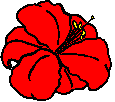|
| Orders: 1-866-449-3344 Toll-free |
|
| International: ++1-317-867-3344 |
 Shields
Gardens
Ltd.
Shields
Gardens
Ltd.| Home |
| Daylilies |
| Rare Bulbs |
| Clivia |
| Seed Sales |
| E-Mail and Chat |
| Photo Gallery |
| Information |
| Sources |
| Guest Sites |
| Societies and Clubs |
| Links |
| People |
| About Us |
| Blogs |
There has not so far been a clear distinction made between a pastel flowered Clivia and a peach flowered Clivia. This occasionally leads some individuals to label as "peach" flowers that most of us would call "pastel."
A normal "orange" Clivia miniata hybrid owes most of its flower color to anthocyanin pigments. These are water-soluble substances that are produced in the epithelial cell layes of the flower petals and sepals, where they are stored in a large vacuole, or separate compartment within the cell. Anthocyanins can be any color from yellow-orange to red to purple or even blue, depending on which anthocyanin the cell produces.
Pastels are flowers that have anthocyanin pigments in the petals and sepals, but at reduced levels; i.e., the pigments are "diluted." There is less of the anthocyanin pigment in the vacuole of each cell. This gives an appearance of light orange, apricot, or even pink color to the colored areas of the flower.
I thought it likely that true peach flowers lacked the anthocyanins entirely. After all, some peach Clivia belong to one of the two genetic Yellow groups. I supposed that the pink or orange coloration in peach Clivia flowers could have come from a modified carotenoid pigment. Carotenes are oil-soluble pigments that are made and stored in chromoplasts, subcellular structures similar to those that make and hold chlorophyl in cells in leaves. The carotenoids are usually in the inner cell layers, below the epithelium. Carotenoids can be pale yellow, butter yellow, orange, or even a red-orange. The intensity of the color will depend on how much of the carotenoid is in each chromoplast of the cell, and how many chromoplasts the cell contains.
With a microscope, one could dissect the petal. Peel away the epithelial layer of cells from the surface ot the petal. Does the pink or orange color come away with the epithelial layer? Then the color is an anthocyanin. If the pink color remains with the basal payers of the petal, then the pigments are probably carotenoids.
Chemically, a chromatographic method with appropriate pigment standards would be more definitive proof of the nature of pastel flowers vs. peach flowers. Gas chromatography linked with mass spectroscopy would probably be the current method of choice. However, even old-fashioned paper chromatography might provide some evidence of what is going on in peach flowers compared to pastel flowers.
Paper chromatography is in fact one of the techniques used by Keith Hammett to look at this very question. He also extracted the carotenoids and separately the anthycyanins, and measured each spectroscopically. He reported the results in the Clivia Society publication, "CLIVIA 8" on page 39 ff., which appeared in 2006.
Keith found that, as one would expect, yellows lacked all anthocyanin. Pastels had both carotenoids and anthocyanins, but at reduced levesl compared to darker flowers. Finally he looked at some "peach" flowers. Both types he tested, 'Chubb Peach' and 'Alick's Peach', showed low levels of carotenoids but traces of anthocyanins. This means there is no clean and neat distinction to be made between pastel and peach when we are describing the colors of Clivia flowers.
The boundaries between peaches and pastels are not going to be easy to define. Pastels will have to be the broader term, including peach flowers within its domain.
|
| Orders: 1-866-449-3344 Toll-free |
|
| International: ++1-317-867-3344 |
For information about this account, contact:
James E. Shields, <jim@shieldsgardens.com>, webmaster
Last revised: 03 November 2006
© Copyright 2006 by SHIELDS GARDENS LTD. All rights reserved.